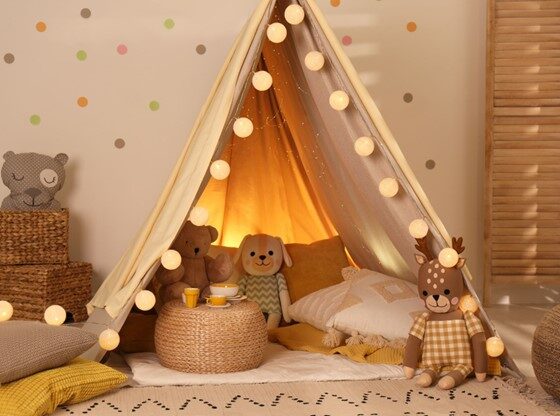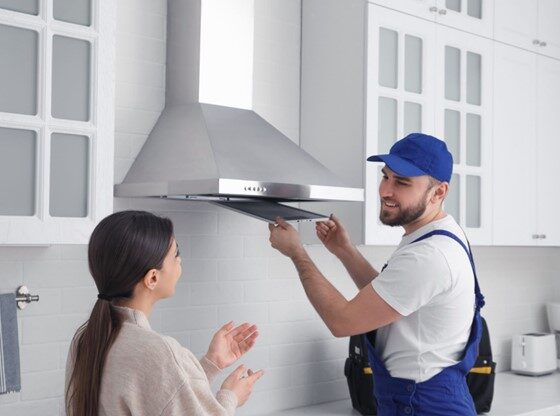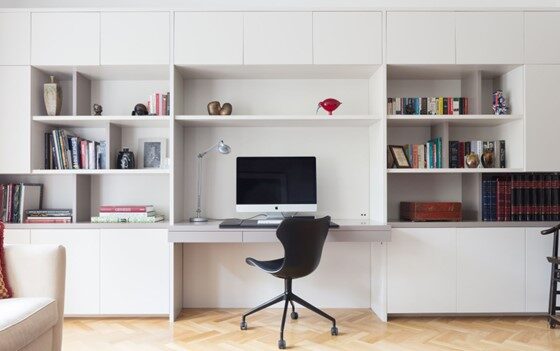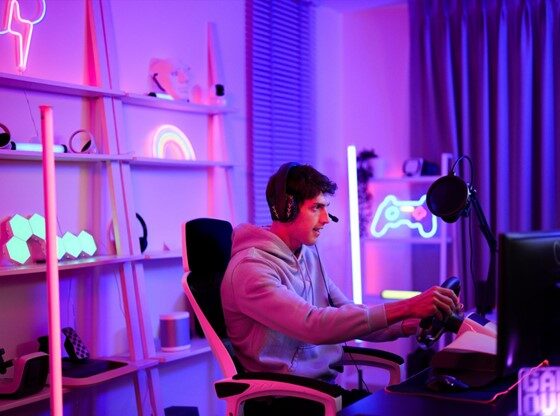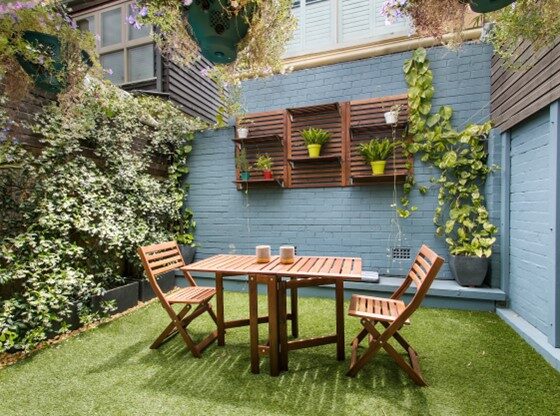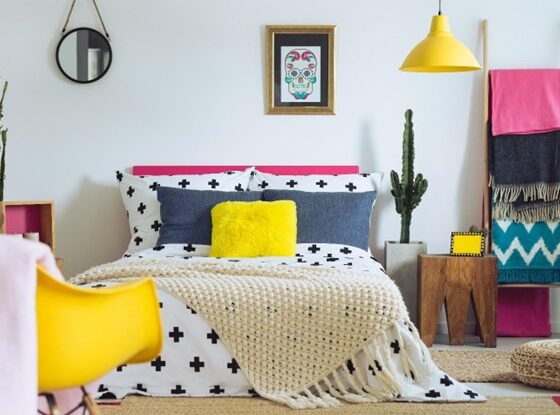Hey there, fellow parents and decorators! Let us take a through the world of the kids, where being good parents you’d like to step into the shoes of kids to understand why is it important to create a beautiful small room for your kid. The art of good parenting lies is to understanding that if a kid needs toys and activities during the day, then he or she also needs a dreamy and starry night to weave their own world full of magic, stars, and dreams at night. Let us understand the charm of small kids’ bedrooms. Why the shift from sprawling spaces to snug nests, you ask? Well, buckle up as we explore the need, importance, and oh-so-adorable trend of creating pint-sized paradises for our little ones right here in the USA!
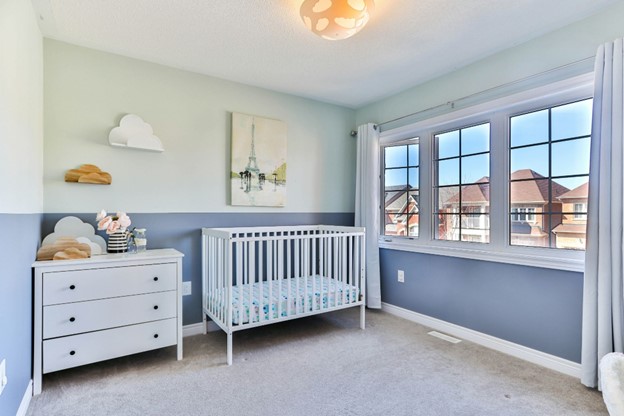
Do small kids really need a separate bedroom?
Picture this: a room filled with laughter, imagination running wild, and the pitter-patter of little feet. Small kids’ bedrooms provide precisely that—intimate spaces where magic happens. Unlike larger rooms that might feel overwhelming for our tiny tots, smaller spaces offer a sense of security and coziness, fostering a conducive environment for play, rest, and creativity.
Why is a kid’s bedroom necessary?
A separate kids’ room is essential for several reasons, primarily centered around providing a dedicated and personalized space for a child’s growth and development. Having their own room offers children a sense of independence and autonomy, allowing them to explore and express their individuality. It creates a safe and secure environment where they can learn important life skills such as organization and responsibility. A separate room also facilitates a conducive atmosphere for sleep, study, and play, contributing to their overall well-being. Additionally, it fosters a sense of privacy and helps establish boundaries, crucial for healthy parent-child relationships. Having a space tailored to a child’s needs and preferences supports their emotional, cognitive, and social development, promoting a positive and nurturing home environment.
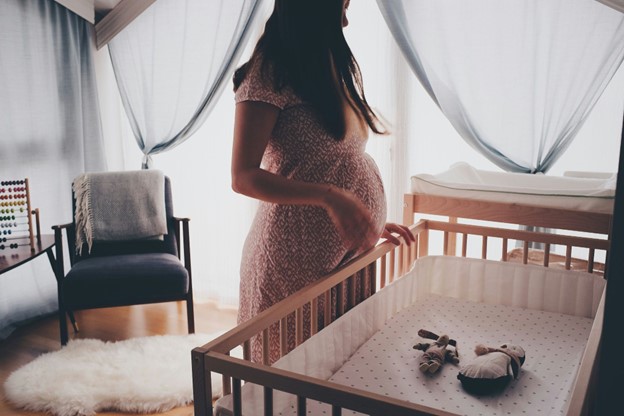
The Importance of Small Kids’ Bedrooms:
1. Encourages Creativity:
- Limited space sparks boundless creativity. Smaller rooms prompt kids to utilize every nook and cranny, turning their bedroom into a canvas for imagination. It’s not just a room; it’s their universe to explore and personalize.
2. Promotes Organization:
- A smaller space nudges kids (and, let’s be honest, parents too) towards maintaining order. With designated areas for play, sleep, and study, organizing becomes a breeze, teaching valuable life skills from an early age.
3. Creates a Cozy Sanctuary:
- Kids, just like adults, crave comfort. Small bedrooms become cozy sanctuaries where they feel safe, fostering a sense of security and peace essential for a good night’s sleep.
4. Facilitates Bonding:
- With less room to roam, small bedrooms encourage shared experiences. Whether it’s reading bedtime stories, playing board games, or simply snuggling up, these close quarters strengthen family bonds.

The Trend of Small Kids’ Bedrooms in the USA:
Now, let’s talk trends! Small kids’ bedrooms are gaining popularity across the USA, and here’s why:
1. Urban Living:
- With more families embracing urban living, space comes at a premium. Small bedrooms allow families to make the most of their square footage without compromising on style or functionality.
2. Minimalist Aesthetic:
- The minimalist trend has transcended into kids’ spaces. Smaller bedrooms align perfectly with the desire for simplicity, clean lines, and a clutter-free environment.
3. Sustainable Living:
- As sustainability takes center stage, parents are opting for smaller, more efficient spaces. This not only reduces environmental impact but also encourages a less consumer-driven lifestyle.
4. Personalized Design:
- Smaller rooms provide an opportunity for personalized and themed design. From whimsical murals to bespoke furniture, parents are unleashing their creativity to transform compact spaces into dreamy realms.

Did you know?
If we talk about some average facts about kids’s bedrooms in the USA, according to the recent study results of sleepfoundation.org:
- Kids who share a bedroom, which means they sleep in the same room, get about 7 hours and 48 minutes of sleep each night. That’s a bit less than kids who have their own rooms and get 8 hours and 16 minutes of sleep.
- In the United States, almost 7 out of 10 households with two or more kids have children sharing a bedroom. Many parents (about 7 out of 10) wish they could give each child their own room if they had the space.
- Most shared bedrooms (nearly 8 out of 10) have two children sleeping in them. This means that lots of kids are bedtime buddies with a sibling or a friend.
- Even though many parents would prefer their kids to have separate rooms, more than half of them (about 58%) feel safer when their children sleep in the same bedroom. It’s like having a sleepover every night!
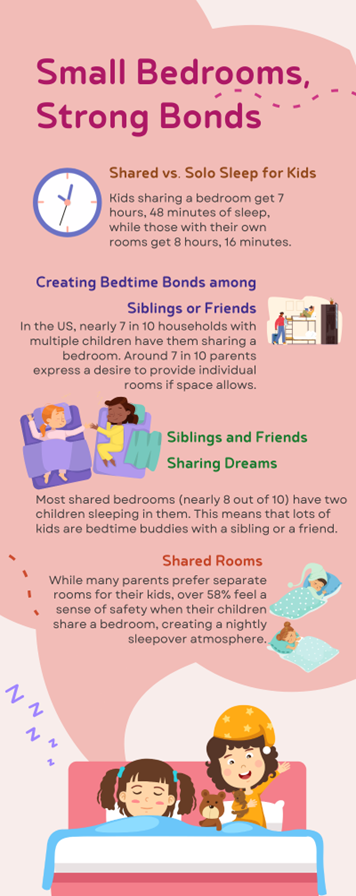
Ways to organize your kids’ small bedroom – Simple and Elegant
Organizing small bedrooms for kids can be a fun and creative challenge. Here are some amazing ideas to make the most of the space and create a functional and enjoyable environment:
- Bunk Beds or Loft Beds:
Save floor space by using bunk beds or loft beds. This opens up the area underneath for a desk, play space or storage.
- Wall-Mounted Shelves:
Install floating shelves or wall-mounted bookshelves to keep books, toys, and other items off the floor. This maximizes storage without taking up valuable floor space.

- Under-Bed Storage:
Choose beds with built-in drawers or utilize under-bed storage bins to store toys, clothes, or extra bedding.
- Multi-Functional Furniture:
Invest in furniture that serves multiple purposes, such as a bed with drawers, a desk that can also be used as a vanity, or ottomans with hidden storage.

- Fold-Down Desk:
Install a fold-down desk that can be used for homework or art projects and then folded up when not in use.
- Hanging Storage:
Hang organizers on the back of doors or on walls to store small items like shoes, accessories, or art supplies.
- Use Vertical Space:
Take advantage of vertical space by incorporating tall bookshelves, wall-mounted hooks for backpacks, or a pegboard for hanging and organizing items.

- Customized Closet:
Customize the closet with shelves, drawers, and hanging rods to maximize storage space. Use bins or baskets to organize smaller items.
- Color-Coding and Labeling:
Organize items by color and use labels for bins and drawers to make it easy for kids to find what they need and keep things tidy.
- Rolling Storage:
Use rolling carts or bins that can be easily moved around the room. This provides flexibility and makes cleaning up more accessible for kids.
- Murphy Bed:
Consider a Murphy bed that can be folded up into the wall, providing extra floor space during the day.
- Cubbies and Cubes:
Use cube storage units to create designated spaces for different items. Label each cube for specific toys, books, or clothes.
- Theme-Based Organization:
Organize the room based on a theme that your child loves. This can make the space more appealing and encourage kids to keep it organized.

- Utilize the Door:
Hang shoe organizers or hooks on the back of the door to store small items, accessories, or shoes.
- Declutter Regularly:
Encourage your child to declutter and donate items they no longer use. Regularly cleaning and organizing the space will help maintain a neat and functional room.
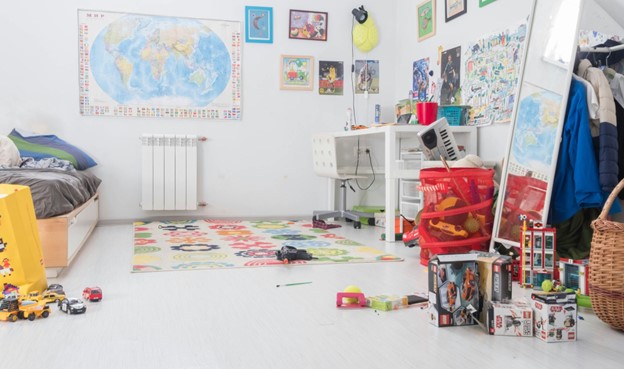
- Pegboard Wall:
Install a pegboard on one wall and use it to hang and organize various items such as hats, backpacks, art supplies, and small baskets for toys. This customizable solution allows for flexibility in rearranging items.
- Drawer Organizers:
Use drawer dividers or organizers within dressers to keep clothes, accessories, and small items neatly separated. This helps maximize the use of drawer space and makes it easier for kids to find what they need.
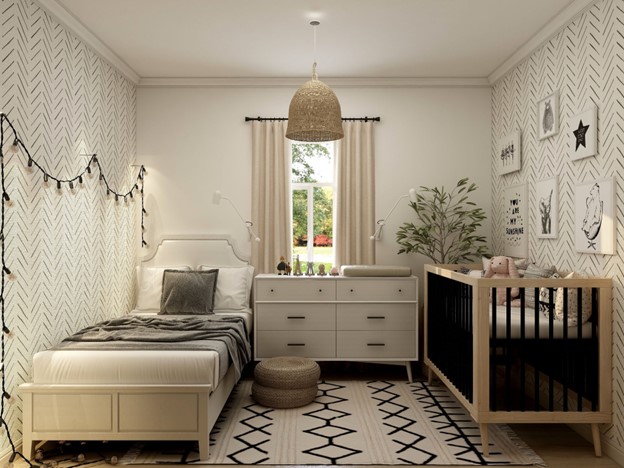
- Curtain Divider:
If the room is shared by siblings, consider using a curtain or hanging fabric divider to create separate spaces. This provides a sense of privacy and organization within the shared room.
- Chalkboard or Whiteboard Wall:
Turn one section of the wall into a chalkboard or whiteboard. This can serve as both a creative outlet for your child and a practical way to jot down reminders, and schedules, or draw to-do lists.
- Stuffed Animal Hammock:
Instead of letting stuffed animals take up floor space, hang a hammock in the corner of the room to store them. This not only keeps them organized but also adds a playful touch to the decor.
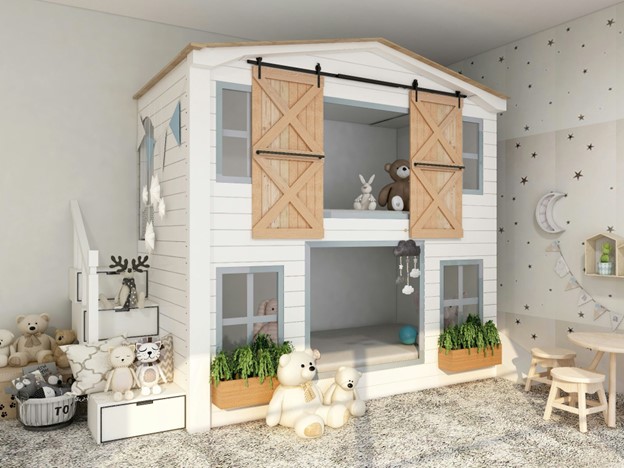
Remember to involve your child in the organization process, allowing them to have a say in the design and arrangement of their space. This not only fosters a sense of ownership but also makes it more likely that they will keep the room organized. The key is to create a space that is not only organized but also reflects their personality and encourages a sense of responsibility for keeping things tidy. This will also help your kid overcome his/her fears, be confident, and be independent.
